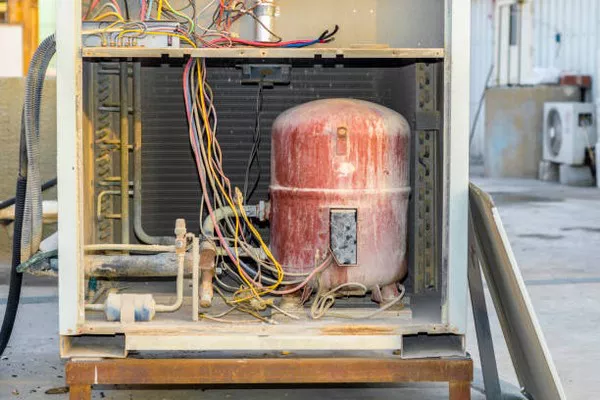In an era of increasing reliance on electricity, power outages can cause significant disruptions. Whether it’s due to natural disasters, infrastructure failures, or other unexpected events, having a backup generator can be a lifesaver. However, the effectiveness of a generator largely depends on how well it is hooked up. This article will delve into the details of hooking up a generator safely and efficiently, covering everything from the basic concepts to advanced considerations.
Understanding the Basics
Types of Generators
Before diving into the setup process, it’s crucial to understand the different types of generators available:
Portable Generators: These are small, movable units typically used for powering essential appliances and small tools during an outage. They are generally gasoline-powered and can be transported easily.
Standby Generators: These are larger, permanently installed units that automatically turn on during a power outage. They are usually powered by natural gas or propane and are designed to power entire homes or businesses.
Power Requirements
To ensure your generator meets your needs, you must determine the power requirements of the devices and appliances you plan to power. This involves calculating the total wattage of all the items.
Running Watts: The continuous power required to keep an appliance running.
Starting Watts: The additional power needed to start an appliance.
Safety Precautions
Safety is paramount when dealing with generators. Improper setup can lead to electrocution, fire hazards, and carbon monoxide poisoning. Key safety tips include:
- Ventilation: Ensure the generator is in a well-ventilated area to prevent carbon monoxide buildup.
- Dry Conditions: Operate the generator in dry conditions to avoid electrical hazards.
- Proper Grounding: Ground the generator to prevent electric shocks.
- Load Management: Do not overload the generator; follow manufacturer guidelines on power limits.
Steps to Hook Up a Generator
Portable Generators
Select a Suitable Location: Place the generator outdoors in a dry, well-ventilated area away from windows, doors, and vents to prevent exhaust fumes from entering enclosed spaces.
Connect the Generator:
- Extension Cords: Use heavy-duty extension cords rated for outdoor use. Plug the extension cords into the generator’s outlets and then connect them to the appliances. Ensure the cords are not frayed or damaged.
- Transfer Switch: For a more integrated solution, install a transfer switch. A transfer switch connects the generator to your home’s electrical system, allowing you to power circuits directly. This requires a licensed electrician to install.
Fuel the Generator: Fill the generator with the appropriate fuel (gasoline, propane, or diesel). Ensure the fuel is stored safely and refuel the generator when it is off and cooled down.
Start the Generator: Follow the manufacturer’s instructions to start the generator. Typically, this involves turning on the fuel valve, setting the choke, and pulling the starter cord or pressing the start button.
Connect Appliances: Connect essential appliances to the generator using the extension cords or transfer switch. Prioritize items like refrigerators, freezers, lights, and medical devices.
Standby Generators
Site Preparation: Choose a location that meets local building codes and manufacturer recommendations. The site should be level and stable.
Install the Generator: This step involves placing the generator on a concrete pad or a pre-fabricated base. Ensure the unit is secure and level.
Connect to Fuel Supply: Standby generators typically use natural gas or propane. Connect the generator to the fuel supply line. This task should be performed by a licensed professional to ensure safety and compliance with regulations.
Electrical Connections:
- Automatic Transfer Switch (ATS): The ATS is a critical component that automatically switches your power source from the utility to the generator in the event of an outage. It also ensures the generator turns off when power is restored. Installation of the ATS should be done by a licensed electrician.
- Wiring: Connect the generator to the electrical panel through the ATS. This involves running conduit and wiring to integrate the generator into your home’s electrical system.
System Testing: After installation, perform a thorough system test. Ensure the generator starts automatically during a simulated power outage and that it powers the designated circuits.
Advanced Considerations
Load Management
Managing the load is crucial to prevent overloading the generator. Use a load management system to prioritize essential circuits and shed non-essential loads during peak usage. This can be done manually or with an automatic load management device.
Maintenance
Regular maintenance ensures your generator remains reliable. Key maintenance tasks include:
- Oil Changes: Change the oil regularly as per the manufacturer’s recommendations.
- Air Filter Replacement: Keep the air filter clean and replace it when necessary.
- Battery Maintenance: Ensure the battery is charged and terminals are clean.
- Fuel System Checks: Inspect fuel lines and connections for leaks and ensure fuel quality.
Integration with Renewable Energy
For those with renewable energy systems like solar panels, integrating a generator can provide additional backup power. This requires a hybrid inverter that can manage multiple power sources and seamless switching between them.
Remote Monitoring
Modern generators come with remote monitoring capabilities. These systems allow you to monitor the generator’s status, fuel levels, and maintenance needs from a smartphone or computer, ensuring you’re always prepared.
Legal and Regulatory Compliance
When installing a generator, it’s important to comply with local building codes and regulations. This may include permits for installation, adherence to noise ordinances, and compliance with environmental regulations. Always consult with local authorities and hire licensed professionals for installation and maintenance.
See also How Does A Hydraulic Generator Work
Conclusion
Hooking up a generator is a valuable skill that ensures you’re prepared for power outages and emergencies. Whether you opt for a portable generator or a standby unit, understanding the setup process, safety precautions, and maintenance requirements is crucial for reliable operation. By following the guidelines outlined in this article, you can ensure that your generator is ready to provide power when you need it most.

